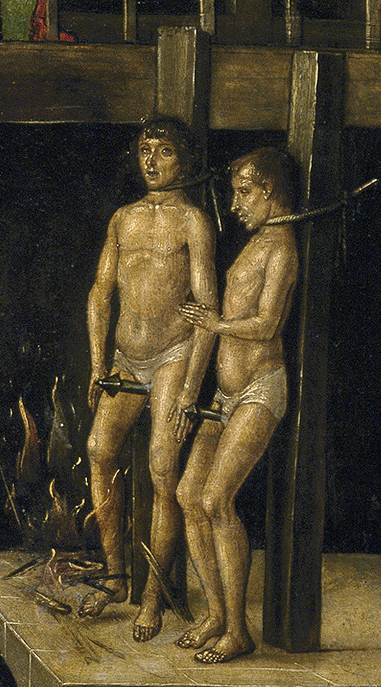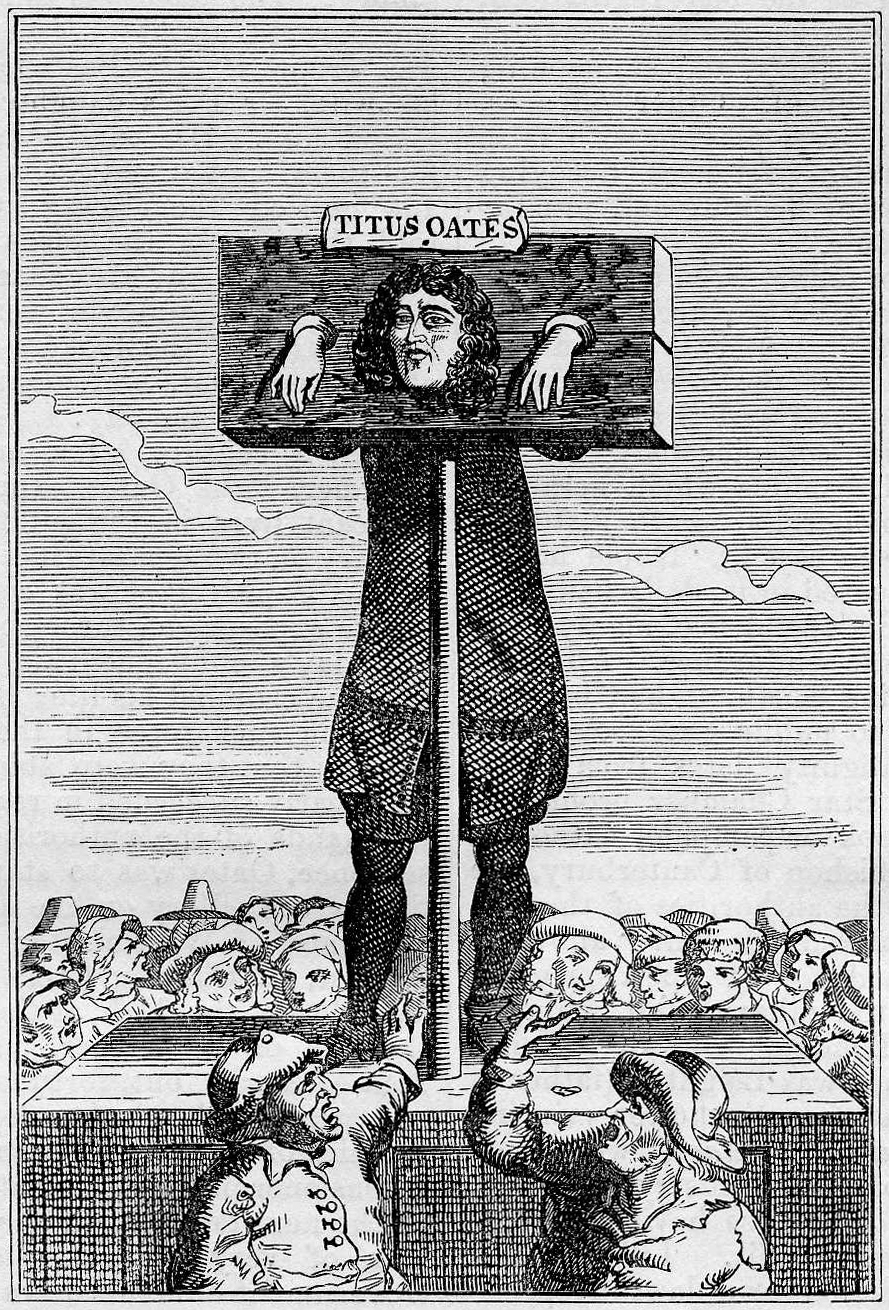|
Humiliation
Humiliation is the abasement of pride, which creates mortification or leads to a state of being Humility, humbled or reduced to lowliness or submission. It is an emotion felt by a person whose social status, either by force or willingly, has just decreased. It can be brought about through intimidation, physical or mental mistreatment or trickery, or by embarrassment if a person is revealed to have committed a socially or legally unacceptable act. Whereas humility can be sought alone as a means to de-emphasize the ego, humiliation must involve other person(s), though not necessarily directly or willingly. Humiliation is currently an active research topic, and is now seen as an important – and complex – core dynamic in human Interpersonal relationship, relationships, having implications at intrapersonal, interpersonal, institutional and international levels.Lindner, Evelin, Making Enemies: Humiliation and International Conflict. London, England: Praeger Security Internationa ... [...More Info...] [...Related Items...] OR: [Wikipedia] [Google] [Baidu] |
Tarring And Feathering
Tarring and feathering is a form of public torture where a victim is stripped naked, or stripped to the waist, while wood tar (sometimes hot) is either poured or painted onto the person. The victim then either has feathers thrown on them or is rolled around on a pile of feathers so that they stick to the tar. Used to enforce unofficial justice or revenge, it was used in medieval Europe and its colonies in the early modern period, as well as the early American frontier, mostly as a form of vigilante justice. The image of a tarred-and-feathered outlaw remains a metaphor for severe public criticism. (" to excoriate" .e. "to flay"being itself a similar type of metaphor). Tarring and feathering was a very common punishment in British colonies in North America during 1766 through 1776. The most famous American tarring and feathering is that of John Malcolm, a British Loyalist, during the American Revolution. Early history The earliest mention of the punishment appears in orders ... [...More Info...] [...Related Items...] OR: [Wikipedia] [Google] [Baidu] |
Mistreatment
Abuse is the act of improper usage or treatment of a person or thing, often to unfairly or improperly gain benefit. Abuse can come in many forms, such as: physical or verbal maltreatment, injury, assault, violation, rape, unjust practices, crimes, or other types of aggression. To these descriptions, one can also add the Kantian notion of the wrongness of using another human being as means to an end rather than as ends in themselves. Some sources describe abuse as "socially constructed", which means there may be more or less recognition of the suffering of a victim at different times and societies. Types and contexts of abuse Abuse of authority Abuse of authority includes harassment, interference, pressure, and inappropriate requests or favors. Abuse of corpse Necrophilia involves possessing a physical attraction to dead bodies that may led to acting upon sexual urges. As corpses are dead and cannot give consent, any manipulation, removal of parts, mutilation, or sexual ... [...More Info...] [...Related Items...] OR: [Wikipedia] [Google] [Baidu] |
Pillory
The pillory is a device made of a wooden or metal framework erected on a post, with holes for securing the head and hands, used during the medieval and renaissance periods for punishment by public humiliation and often further physical abuse. The pillory is related to the stocks. Etymology The word is documented in English since 1274 (attested in Anglo-Latin from ), and stems from Old French (1168; French language, modern French , see below), itself from medieval Latin , of uncertain origin, perhaps a diminutive of Latin 'pillar, stone barrier'. Description Rather like the lesser punishment called the stocks, the pillory consisted of hinged wooden boards forming holes through which the head or various limbs were inserted; then the boards were locked together to secure the captive. Pillories were set up to hold people in marketplaces, crossroads, and other public places. They were often placed on platforms to increase public visibility of the person; often a placard deta ... [...More Info...] [...Related Items...] OR: [Wikipedia] [Google] [Baidu] |
Charivari
Charivari (, , , alternatively spelled shivaree or chivaree and also called a skimmington) was a European and North American folk custom designed to shame a member of the community, in which a mock parade was staged through the settlement accompanied by a discordant mock serenade. Since the crowd aimed to make as much noise as possible by beating on pots and pans or anything that came to hand, these parades were often referred to as rough music. Parades were of three types. In the first and generally most violent form, an alleged wrongdoer (or wrongdoers) might be dragged from his or her home or place of work and paraded by force through a community. In the process, the victim was subject to the derision of the crowd and might be pelted and was frequently dunked at the end of the proceedings. A safer form involved a neighbour of the wrongdoer impersonating the victim while being carried through the streets. The impersonator was obviously not themselves punished and often cried ou ... [...More Info...] [...Related Items...] OR: [Wikipedia] [Google] [Baidu] |
Prisoner Abuse
Prisoner abuse is the mistreatment of persons while they are under arrest or incarcerated. Prisoner abuse can include physical abuse, psychological abuse, sexual abuse, torture, or other acts such as refusal of essential medication, and it can be perpetuated by either fellow inmates or prison faculty. Physical abuse Physical abuse of prisoners includes illicit beating and hitting of prisoners, unlawful corporal punishment, stress positions, and excessive or prolonged physical restraining. According to the ''New York Times'', along with physical abuse, prisoners are being thrown into jail for mental illnesses and not being treated for them. This can cause their issues to get worse and in some cases never get better. The mentally ill can also be held in restrained areas for long periods of time because of their mental condition. This means that these mentally ill people do not have the resources to get better. Abuse is also caused by overpopulation in jails. Penal Reform I ... [...More Info...] [...Related Items...] OR: [Wikipedia] [Google] [Baidu] |
Humility
Humility is the quality of being humble. The Oxford Dictionary, in its 1998 edition, describes humility as a low self-regard and sense of unworthiness. However, humility involves having an accurate opinion of oneself and expressing oneself modestly as situations demand, with clear goal orientation, openness, broad-mindedness, and a non-imposing mentality. In a religious context, humility can mean a recognition of self about a deity (i.e. God) and subsequent submission to that deity as a religious member. Outside of a religious context, humility is defined as being "unselved"—liberated from the consciousness of self—a form of temperance that is neither having pride (or haughtiness) nor indulging in self-deprecation. Humility refers to a proper sense of self-regard. In contrast, humiliation involves the external imposition of shame on a person. Humility may be misinterpreted as the capacity to endure humiliation through self-denigration. This misconception arises from the co ... [...More Info...] [...Related Items...] OR: [Wikipedia] [Google] [Baidu] |
Intimidation
Intimidation is a behaviour and legal wrong which usually involves deterring or coercing an individual by threat of violence. It is in various jurisdictions a crime and a civil wrong (tort). Intimidation is similar to menacing, coercion, terrorizing and assault in the traditional sense. This includes intentional behaviors of forcing another person to experience general discomfort such as humiliation, embarrassment, inferiority, limited freedom, etc and the victim might be targeted based on multiple factors like gender, race, class, skin color, competency, knowledge, wealth, temperament, etc. Intimidation is done for making the other person submissive (also known as cowing), to destabilize/undermine the other, to force compliance, to hide one's insecurities, to socially valorize oneself, etc. There are active and passive coping mechanisms against intimidation that include, but are not limited to, not letting the intimidator invade your personal dignity and space, addressing thei ... [...More Info...] [...Related Items...] OR: [Wikipedia] [Google] [Baidu] |
Embarrassment
Embarrassment or awkwardness is an emotional state that is associated with mild to severe levels of discomfort, and which is usually experienced when someone commits (or thinks of) a socially unacceptable or frowned-upon act that is witnessed by or revealed to others. Frequently grouped with shame and guilt, embarrassment is considered a " self-conscious emotion", and it can have a profoundly negative impact on a person's thoughts or behavior. Usually, some perception of loss of honor or dignity (or other high-value ideals) is involved, but the embarrassment level and the type depends on the situation. Causes Embarrassment can be personal, caused by unwanted attention to private matters or personal flaws or mishaps or shyness. Some causes of embarrassment stem from personal actions, such as being caught in a lie or in making a mistake. In many cultures, being seen nude or inappropriately dressed is a particularly stressful form of embarrassment (see modesty). Personal ... [...More Info...] [...Related Items...] OR: [Wikipedia] [Google] [Baidu] |
Torture
Torture is the deliberate infliction of severe pain or suffering on a person for reasons including corporal punishment, punishment, forced confession, extracting a confession, interrogational torture, interrogation for information, or intimidating third parties. definitions of torture, Some definitions restrict torture to acts carried out by the state (polity), state, while others include non-state organizations. Most victims of torture are poor and marginalized people suspected of crimes, although torture against political prisoners, or during armed conflict, has received disproportionate attention. Judicial corporal punishment and capital punishment are sometimes seen as forms of torture, but this label is internationally controversial. A variety of methods of torture are used, often in combination; the most common form of physical torture is beatings. Beginning in the twentieth century, many torturers have preferred non-scarring or psychological torture, psychological meth ... [...More Info...] [...Related Items...] OR: [Wikipedia] [Google] [Baidu] |
Paranoia
Paranoia is an instinct or thought process that is believed to be heavily influenced by anxiety, suspicion, or fear, often to the point of delusion and irrationality. Paranoid thinking typically includes persecutory beliefs, or beliefs of conspiracy concerning a perceived threat towards oneself (e.g., ''"Everyone is out to get me"''). Paranoia is distinct from phobias, which also involve irrational fear, but usually no blame. Making false accusations and the general distrust of other people also frequently accompany paranoia. For example, a paranoid person might believe an incident was intentional when most people would view it as an accident or coincidence. Paranoia is a central symptom of psychosis.Green, C., Freeman, D., Kuipers, E., Bebbington, P., Fowler, D., Dunn, G., & Garety, P. (2008). Measuring ideas of persecution and social reference: the Green et al. Paranoid Thought Scales (GPTS). ''Psychological Medicine, 38'', 101 – 111. Signs and symptoms A common symptom ... [...More Info...] [...Related Items...] OR: [Wikipedia] [Google] [Baidu] |
Social Rejection
Social rejection occurs when an individual is deliberately excluded from a social relationship or social interaction. The topic includes ''interpersonal rejection'' (or peer rejection), ''romantic rejection'', and ''familial estrangement''. A person can be rejected or shunned by individuals or an entire group of people. Furthermore, rejection can be either ''active'' by bullying, teasing, or ridiculing, or ''passive'' by ignoring a person, or giving the " silent treatment". The experience of being rejected is subjective for the recipient, and it can be perceived when it is not actually present. The word "ostracism" is also commonly used to denote a process of social exclusion (in Ancient Greece, ''ostracism'' was a form of temporary banishment following a people's vote). Although humans are social beings, some level of rejection is an inevitable part of life. Nevertheless, rejection can become a problem when it is prolonged or consistent, when the relationship is important, ... [...More Info...] [...Related Items...] OR: [Wikipedia] [Google] [Baidu] |









